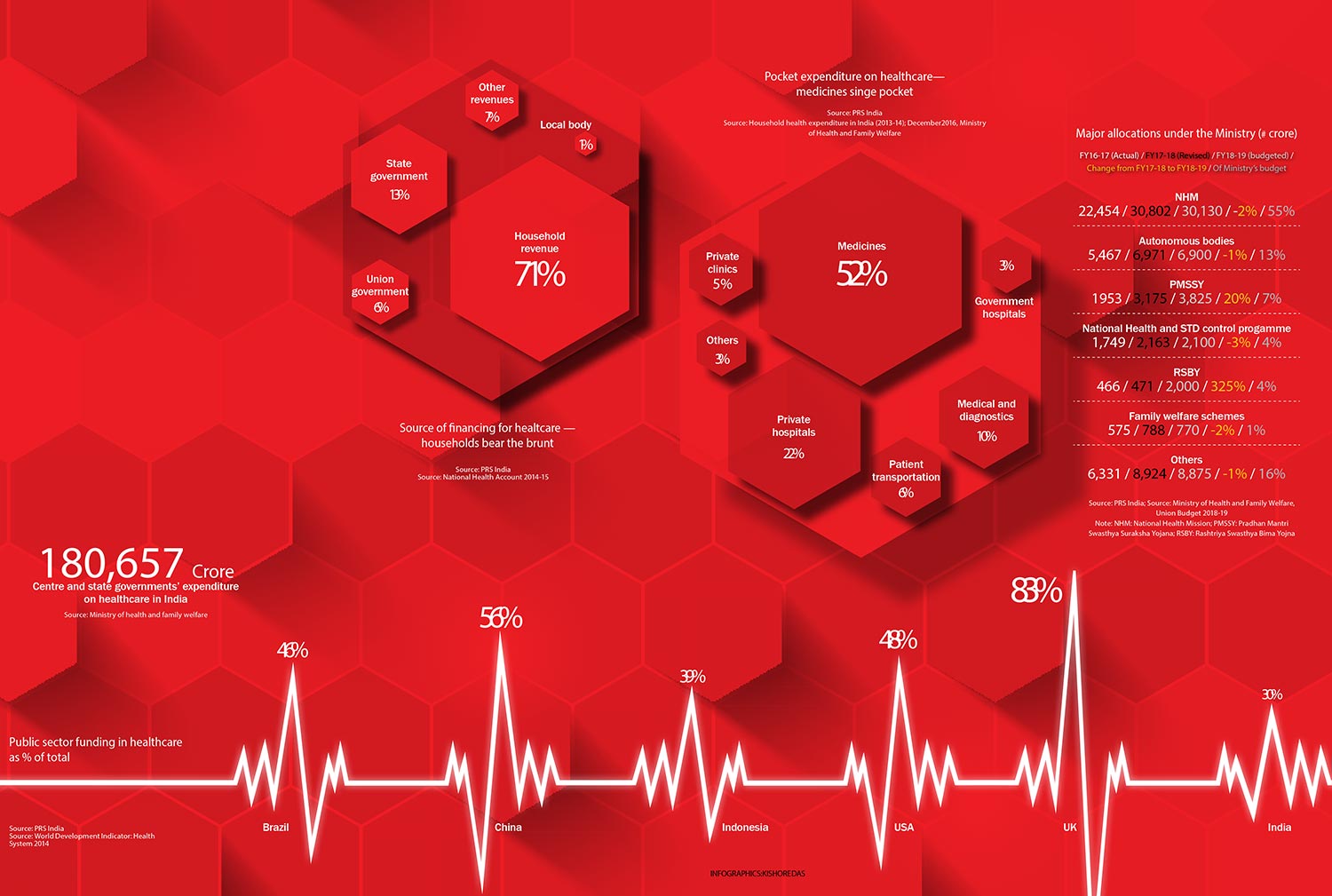After decades of depriving citizens of a decent public healthcare machinery, the government may have finally found a solution to addressing the huge need-gap in healthcare. Although it is still not clear how the health insurance programme will be designed, Union Minister JP Nadda’s announcement on March 23 that Rs.10,000 crore will be allocated to the programme for the next couple of years, is a welcome move. Under the scheme every family will be extended a insurance cover of upto Rs.500,000. At 1.4 % of GDP, India’s public healthcare expenditure constitutes a meagre 30% of the total healthcare expenditure, which is abysmal as compared to some of the other emerging and developed economies. With around 70% of the healthcare expenditure being borne by households themselves, around 7% of Indians are pushed into poverty every year due to high medical expenses. Medicines currently constitute more than half of the pocket expenditure followed by what is spent on private hospitals, medical and diagnostic labs, patient transportation, and emergency rescue. While a nation-wide insurance programme will make healthcare accessible for a wider audience, worries around how healthcare costs will spiral can’t be wished away.
Will Modicare bridge the healthcare gap?
How India’s public health expenditure still lags behind many other countries

Opening
Opening









